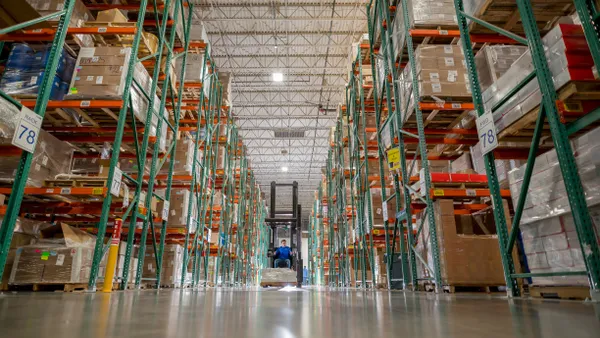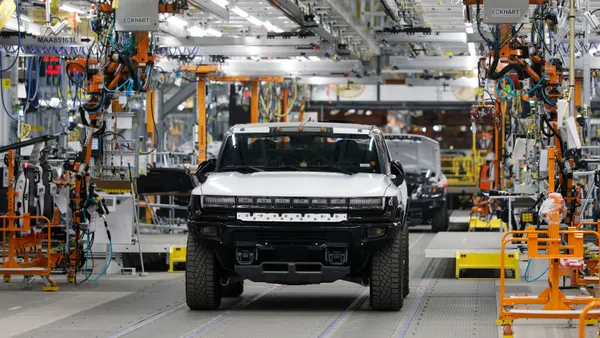Dive Brief:
- Twelve of the 22 companies on Gartner's list of top supply chains in both 2017 and 2018 increased their quarterly inventory turns, according to a comparison of the two data sets by Supply Chain Dive.
- By contrast, only one company reported no change in inventory turns, while another nine saw their turns decrease in 2018. The median change among the 22 companies was a 2.0% increase, compared to 2017.
- The metric varies greatly across companies, however. Spirits and beer producer Diageo ranked 16 in 2018 and saw the biggest improvement with an 11.1% boost in turns from 0.9 to 1.0, while The Coca Cola Co. (ranked no. 22) saw the largest decrease of -15.8% from 5.7 to 4.8, year over year.
Dive Insight:
Gartner's annual list of top supply chains is meant to provide an industry benchmark on key metrics and examples to follow — but no one metric alone tells the full story of a supply chain.
Inventory turns, calculated by Gartner as cost of goods sold divided by quarterly average inventory, are a useful metric for evaluating how quickly a product is selling. A high turn rate suggests fast-moving goods — whether by demand or heavy marketing — whereas lower measures suggest a lag in sales.
The supply chain manager's job, typically, is to lower costs by optimizing turns so always to purchase, produce and store just enough to sell.
However, the exact number, as shown by the chart above, varies greatly by industry and company. In Gartner's 2017 report, McDonald's recorded an inventory turns metric of 174.5, far above the year's second-fastest-moving company: Samsung Electronics (15.1).
For that reason, Supply Chain Dive sought to find out if there was a general trend in how much inventory turns changed, year over year, and whether that was in any way correlated with the change in rank by Gartner, year over year.
In general, none of the 22 companies on the list both years improved their inventory turns score by more than 1.0 year over year. Only one company, by contrast, saw its turns fall by more than 1.0 points. HP Inc.'s metric fell 1.4 points in 2018, or 14.3% year over year. The median change among all 22 was a miniscule 0.1 points.
An average of all the metrics did not yield more clear results. On average, the 22 companies had an inventory turn score of 6.08 in 2017. This fell to 6.02 in 2018.
The changes in rank did not seem to correlate greatly to turn time changes, either, as Samsung Electronics, the second-fastest-moving company in 2017 rose 8 places in the ranks, but recorded a 3.3% drop in turn times in 2018. By contrast, Johnson & Johnson dropped five slots, but saw a 3.8% improvement in its turn times.
The formula for ranking the top supply chains is a big factor. Gartner and peer opinion count for 50% of the score in the rankings, while inventory turn times count for only 10% of the composite score. Three-year weighted return on assets, three-year weighted revenue growth and a corporate social responsibility score account for the other 40%.
Still, it is interesting to note how these top companies are adapting their supply chain speed, year over year: A majority increased, signaling a slight step toward faster moving supply chains. Next year's report will help indicate whether this is a standard, or a trend to follow going forward.















